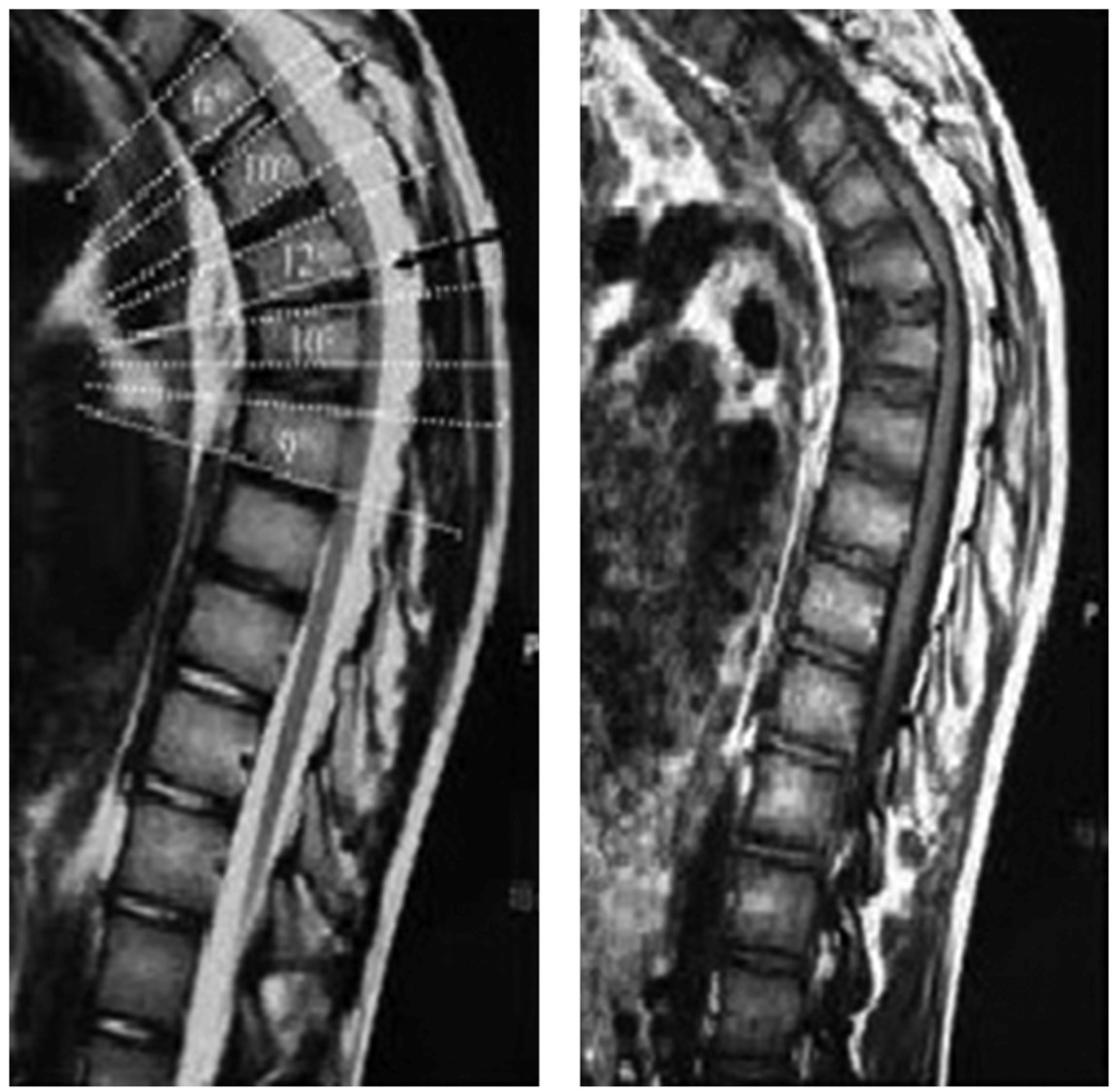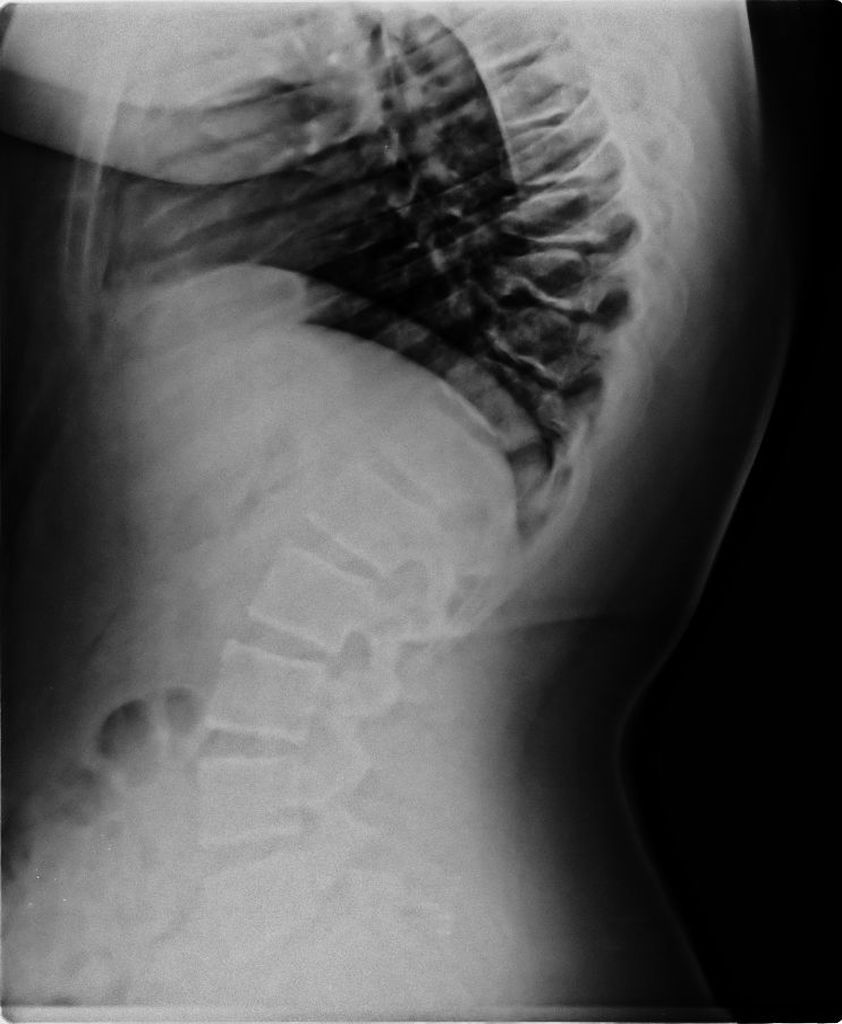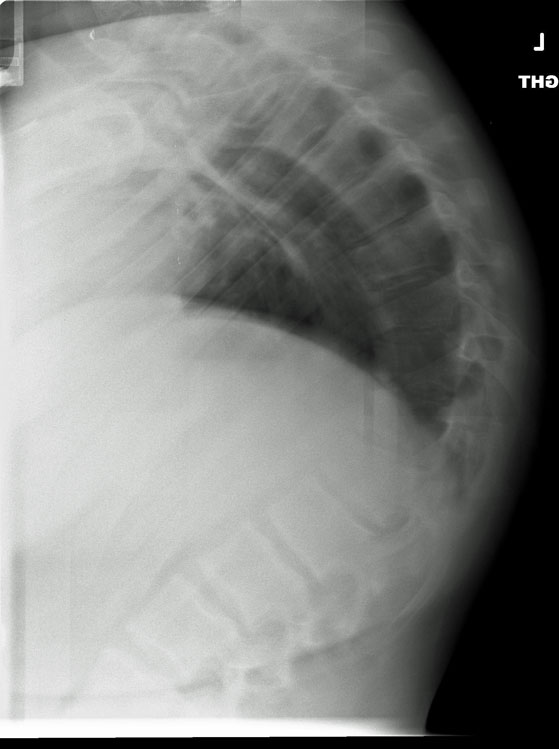
Image
Lumbar Scheuermann disease is a type of variant Scheuermann disease where there is no abnormal kyphosis. This has been reported in the lumbar spine and thoracolumbar junction of patients of all ages, and back pain may be present. On imaging, affected individuals can have vertebral endplate changes, disc space narrowing, and anterior Schmorl.

Dr Balaji Anvekar FRCR Scheuermann's disease MRI
Notably, both classic SD and atypical SD are associated with back pain. 14, 16, 17, 19 - 22 Although Scheuermann kyphosis is uncommon, SD radiological signs have been observed in 18% to 40% of the general population, 23 suggesting that SD, or more precisely, "SD-like" spine, may be a variant of normal spine morphology rather than a.

Morbus Scheuermann Gesundheitsportal Medavit De My XXX Hot Girl
A-Z of Musculoskeletal and Trauma Radiology - June 2008. To save this book to your Kindle, first ensure [email protected] is added to your Approved Personal Document E-mail List under your Personal Document Settings on the Manage Your Content and Devices page of your Amazon account.

Scheuermann’s Disease POGO Physio Gold Coast
Therefore, in the present study, we aimed to evaluate the radiological pathomorphological features of the spine and the association between the thoracic kyphosis angle and the clinical presentation by assessing pain and self-perceived body image in patients with Scheuermann's disease. We proposed two hypotheses.

scheuermanndisease4 PinkyBone
Scheuermann's kyphosis (SK) is a rigid spinal kyphosis affecting the mid-thoracic or thoracolumbar spine, which was first described by Holger Werfel Scheuermann in 1920. 1, 2 The condition is associated with anterior wedging of the vertebrae, end plate irregularities, and Schmorl's nodes. 3 In 1964, Sorensen 4 was the first to define SK radiographically by the presence of at least three.

MY ERADIOLOGY CASES December 2010
Scheuermann disease, (juvenile kyphosis), is a growth disturbance with curving deformity of the thoracic or thoracolumbar spine in adolescents that causes an increase bowing or rounding of the back in the sagittal plane. It is defined by anterior vertebral wedging of at least 5° in 3 or more adjacent vertebral bodies.

Scheuermann’s Disease Neupsy Key
Gender: Female. x-ray. Vertebral wedging, subchondral osseous irregularity in the endplates, Schmorl's nodes and an asymptomatic thin cleft in the neural arch of the fifth lumbar vertebra. There's also hypoplasia of the left iliac bone and mild hypoplasia of the ipsilateral proximal femur.

Scheuermann disease Image
The theories relating to Scheuermann's disease are reviewed. An attempt is made to resolve discrepancies in these theories in the light of radiologically derived evidence. This evidence suggests that central nodes, marginal nodes, and the irregular ossification of Scheuermann's disease, result from different mechanisms, and that the problem has been obscured by failure to consider them as.

Scheuermann's Kyphosis Spine Orthobullets
Case Discussion. A rare example of Scheuermann disease "caught in the act", that may eventually result in kyphosis. Also note the persisting neurocentral synchondroses typical for that age.

Scheuermann disease Radiology Case
STIR. Coronal. STIR. Axial. T2. Decreased lower thoracic and lumbar vertebral height, associated with marked irregularity of end-plates and formation of multiple prominent Schmorl's nodes. The AP diameter of the spinal canal gradually decreases as the level lowers.

Scheuermann’s Disease Radsource
Scheuermann's disease (SD) is a progressive disease associated with back pain or low back pain in adolescents. It is the most common cause of structural thoracic or thoracolumbar hyperkyphosis, and could be seen in typical or atypical patterns. Diagnosis of SD is made by radiological methods along with clinical findings.

Scheuermann disease presenting as compressive myelopathy Neurology
Sagittal. bone window. Axial bone. window. There is mild, chronic wedging of lower thoracic vertebral bodies, with Schmorl's nodes and disc space narrowing. No acute compression fracture. Facet joints are enlocated. Posterior elements are intact. The appearance of the thoracic spine is consistent with Scheuermann's disease.

Scheuermann disease Radiology Case Radiology, Disease, Thoracic vertebrae
Scheuermann disease, also known as juvenile kyphosis , juvenile discogenic disease 11, or vertebral epiphysitis, is a common condition which results in kyphosis of the thoracic or thoracolumbar spine. The diagnosis is usually made on plain radiograph.

Scheuermann’s Disease Radsource
Introduction. Scheuermann's disease (SD), also known as Scheuermann's juvenile kyphosis or juvenile osteochondrosis of the spine, was first described by Holger Scheuermann in 1920. SD develops prior to the onset of puberty, typically presenting during the adolescent growth spurt as a rigid, sometimes painful thoracic kyphosis. 1.

Scheuermann’s Disease Radsource
Scheuermann kyphosis, also known as Scheuermann disease, juvenile kyphosis, or juvenile discogenic disease, is a condition of hyperkyphosis that involves the vertebral bodies and discs of the spine identified by anterior wedging of greater than or equal to 5 degrees in 3 or more adjacent vertebral bodies. The thoracic spine is most commonly involved, although involvement can include the.

Hyperkyphosis Scheuermanns Disease
Scheuermann disease is an osteochondrosis that causes localized changes in vertebral bodies, leading to backache and kyphosis. Diagnosis is with spinal x-rays. Treatment usually involves only reduction of weight bearing and strenuous activity. Scheuermann disease manifests in adolescence and is slightly more common among boys.